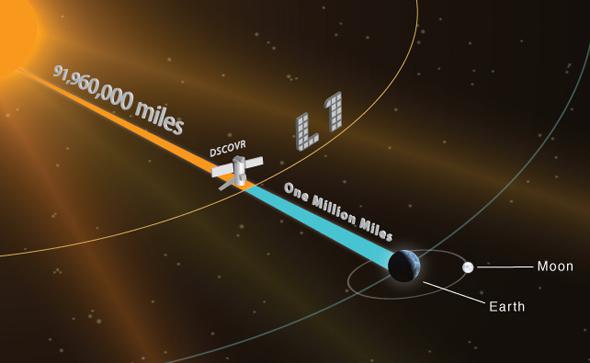Update, Feb. 8 at 23:15 UTC: The launch was scrubbed due to an issue with the Air Force tracking equipment that would keep tabs on the rocket as it moves down range. The next launch window is Monday evening, Feb. 9, at 23:07 UTC (6:07 p.m. Eastern).
Update 2, Feb. 9 at 18:15 UTC: The launch for tonight has been scrubbed due to weather. The next attempt will be Tuesday, Feb. 10, at 23:05 UTC (6:05 p.m. Eastern).
Tonight, Sunday, Feb. 8, 2015, at 23:10 UTC (6:10 p.m. Eastern), SpaceX is scheduled to launch a Falcon 9 rocket into space.
There’s a lot going on with this launch, so this’ll take a moment to explain. First, you can watch it live at the SpaceX Livestream, and on their webcast channel. It’ll also be carried on NASA TV, and you can watch on their UStream channel, too.
Next, this will be SpaceX’s second attempt to land the first stage Falcon 9 booster on a floating platform in the Atlantic. The last attempt, a few weeks ago, ended with, um, mixed results. The booster lofted the upper stack (the upper portion of the rocket), separated, slowed, and made its way to the barge in the Atlantic … but wound up slamming into it too hard, at an angle, and burning rather spectacularly. It turns out the hydraulic fluid in the steering fins had run out and it couldn’t keep itself oriented properly. In tonight’s launch, there should be more than enough fluid to keep the fins active.

Diagram by NOAA
Bear in mind this booster landing is a secondary mission objective; if it works, great! But the primary objective is to launch the payload to its proper orbit.
That payload itself is pretty cool: the National Oceanic and Atmospheric Administration’s DSCOVR, or the Deep Space Climate Observatory. This is a Sun- and Earth-observing satellite that will monitor solar storms and their effect on Earth. It will provide early real-time warnings of major solar events so that actions can be taken here on Earth if needed—for example, sensitive satellites can be switched off to avoid radiation damage, and power grids can work to shuffle around energy distribution to avoid power overloads (like the solar storm–induced brownout in Quebec in 1989).
DSCOVR will be placed into a very special location: the Earth-Sun L1 point. This is a location in space about 1.5 million kilometers from the Earth, directly between our planet and the Sun. At the L1 point, the gravity of the Earth and Sun balance with the centrifugal force of the object’s orbit, keeping the orbit semi-stable. The DSCOVR site has an explanation with more details, and the NASA WMAP page explains this pretty well, too.
Incidentally, from that distance, the Earth will look to the satellite about as big as the Moon does from the Earth. Even modest magnification will yield incredible images. The Earth-facing camera (called EPIC) uses 10 different filters, and the size of the Earth in the images returned will be roughly 800–900 pixels across, so they should be quite lovely.
DSCOVR has a rich history. It was originally called Triana, an Earth-observing satellite proposed by then–Vice President Al Gore. It would provide important data about the Earth, and could also take pictures of the full sunlit face of the Earth, which Gore felt would make an excellent public outreach effort. I think he was right; people love photos of the Earth from space, and a full-Earth near real-time image stream would be extremely popular.
Once the Bush administration took over, though, in 2000, the mission was literally shelved; it was put into storage until 2008 when it was reinstated and started prep for launch. I think it’s worth noting that Gore was lambasted by other politicians and some media at the time for wasting NASA’s time and money, but that was unfair; a review actually did determine the mission was worthwhile. And I’ve seen how people react to Earth-observing imagery; it’s a wonderful opportunity to get the public engaged and to educate kids about the planet. I’m glad this mission is about to get under way.
About that, a vast amount of detail about the launch itself, including detailed timing of the countdown, is listed at AmericaSpace. It’ll take about four months for DSCOVR to wend its way out to L1, and sometime after that will go through its shakedown before beginning to return images of our star and Blue Marble. I’m really looking forward to seeing them!
